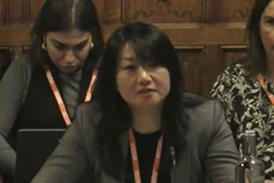White students applying to study law at the University of Oxford are over three times more likely to be admitted than their black counterparts, according to figures released by the university today. From 2015 to 2017, 11 (5.7%) of the 194 UK black students applying for law courses were admitted.
This compared with 12.7% of black, Asian and minority ethnic applicants overall and 20% of white applicants. Where applicants identified themselves as mixed heritage, 32 (18%) of these students were admitted to take a law degree, out of 174 that applied.
Around 41% of applications from UK-domiciled black students over the three-year period were to study either medicine or law – by comparison these courses accounted for 12% of applications from white students.
In terms of educational background, 20% of applicants who attended independent schools were admitted to study law, while 17% of applicants from a state school were successful.
A total of 436 law applications were made by people classified as being from less advantaged areas, with 55 (12.6%) of them being admitted. Among people from other backgrounds, 18% of applications to study law resulted in an admission.
The figures have been the subject of much debate, as the university defends its advances in inclusion and diversity, while campaigners, notably the Tottenham MP David Lammy, criticise the speed of change.
Lammy today tweeted that ‘Oxford need to address these institutional failings instead of spinning the figures and blaming the schools or applicants’.
Writing in the Times, university vice-chancellor Louise Richardson said the figures had been released to ‘dispel many of the myths’ around admissions.
She stated that the institution has improved access and outreach in recent years and significantly expanded its UNIQ summer school, which gives prospective students an insight into life at Oxford and what opportunities are available.
Richardson added: ‘This data doesn’t all reflect well on us but it does make clear that the composition of our student body is changing. We have more students from ethnic minorities and more from deprived backgrounds than ever before.’


























17 Readers' comments